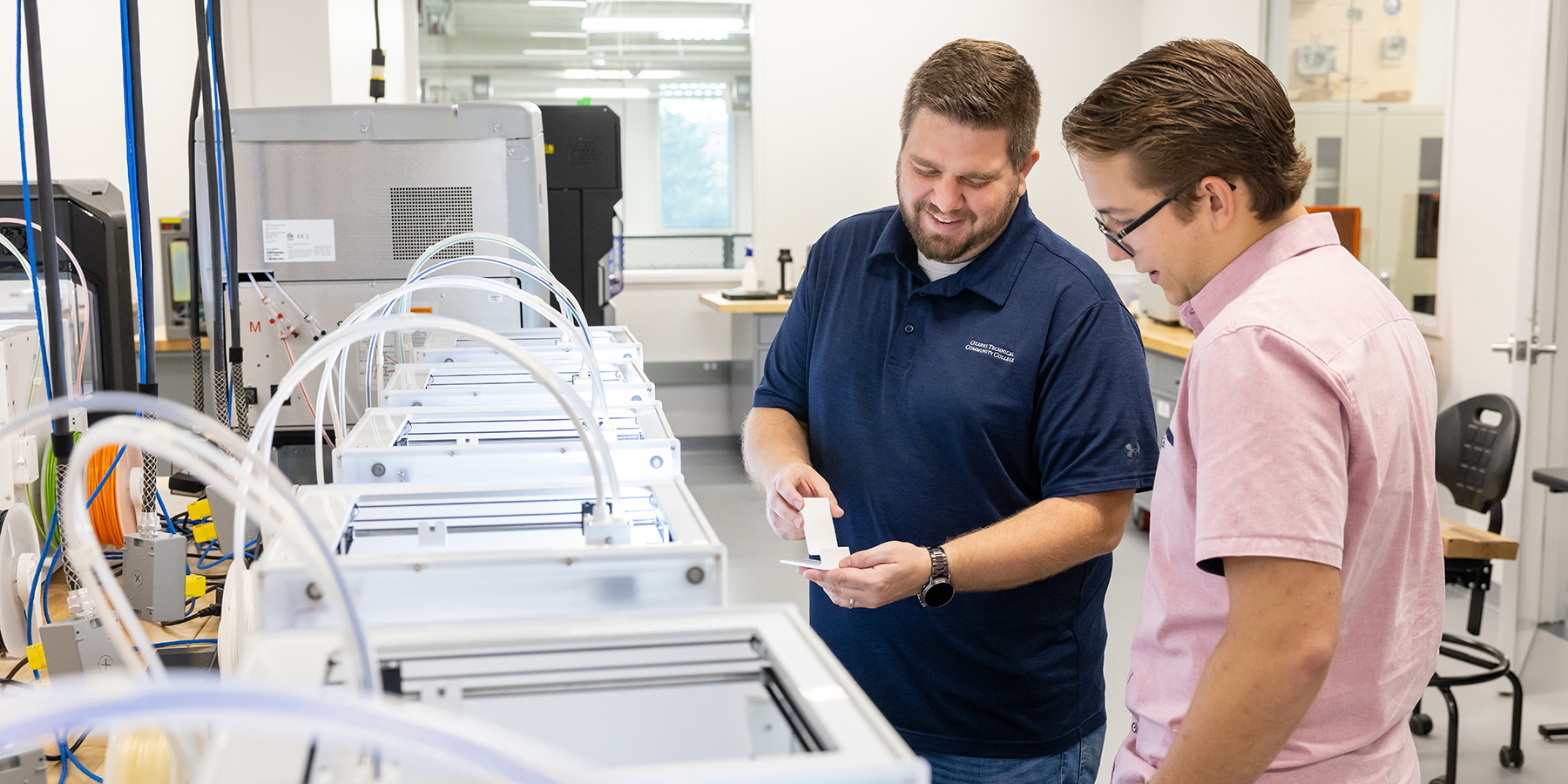Everyone has seen the motorized shopping carts at the grocery store for shoppers who have limited mobility. But what if a customer comes to the store in a wheelchair? They have to get out of their wheelchair, get into the motorized shopping cart, and then, what happens to their wheelchair while shopping? Plus, they must get their groceries to their vehicle and get back into their wheelchair. It is a cumbersome and inconvenient prospect.
There may be a solution thanks to a collaborative project between Drafting and Design, English, and Occupational Therapist Assistant students at Ozarks Technical Community College. Students in those classes conceived, designed, created, and developed communications for a shopping cart that attaches to a wheelchair. The device allows the shopper to remain in their wheelchair while collecting and purchasing items. Besides the shopping cart device, students developed other adaptive technologies to solve challenges for people with limited mobility.
Occupational Therapist Assistant Instructor Sandy Sanford always had her students envision adaptive equipment to solve challenges for their patients. However, their models were limited to their design skills and access to materials and tools.
“In occupational therapy, our patients just want to be independent,” Sanford said. “It’s part of our work to brainstorm with our patients and develop ideas to help them overcome their challenges.”
In the fall of 2021, Ryan Friend’s drafting and design students became involved and brought their creative and manufacturing abilities to the table. But Friend thought the project could be improved.
“When I was a student at OTC, I took technical writing, and I thought our project could benefit from people with those skills,” Friend said. “The writing students served as project managers and communicators.”
Jane Cowden teaches technical writing for OTC. She had her students develop a schedule for each project with deadlines. Plus, her students wrote instructions for how to create the assistive devices, directions for use and designed websites for the products. Beyond the tasks they had to perform, Cowden says her students learned professional “soft skills.”
“I think the most useful part of this project was the experience of working with a client,” Cowden said. “My writing students and the drafting students were the service providers, and they had to work as a team to create effective deliverables for the occupational therapy students.”
Sanford and Friend echo Cowden’s sentiment that this real-world project taught their students professionalism and the importance of timely and clear communication.
Besides the wheelchair attachment, the students developed several other assistive devices, including:
- A scooter for a baby who doesn’t have the core strength to crawl.
- A foot-activated flushing device for people who cannot bend at the waist.
- A dog walking tool that prevents the leash from becoming entangled with a walker or wheelchair.
Luke Conner, the drafting and design student who created the shopping cart wheelchair attachment, already has a job working for an engineering firm in Springfield. But the wheelchair shopping cart project provided him with a different challenge than he encounters at work.
“I really had to keep the end user in mind on this project,” Conner said. “I had to make a large enough cart but one that would still fold up for easy transport, attach to a variety of wheelchairs and provide adequate leg room. I learned a great deal trying to meet all of those parameters.”
This collaborative project between the three classes illustrates the value of the breadth and depth of programs OTC offers. By bringing together classes representing health sciences, technical education and general education, the students and instructors created outcomes that exceeded the sum of their parts.

